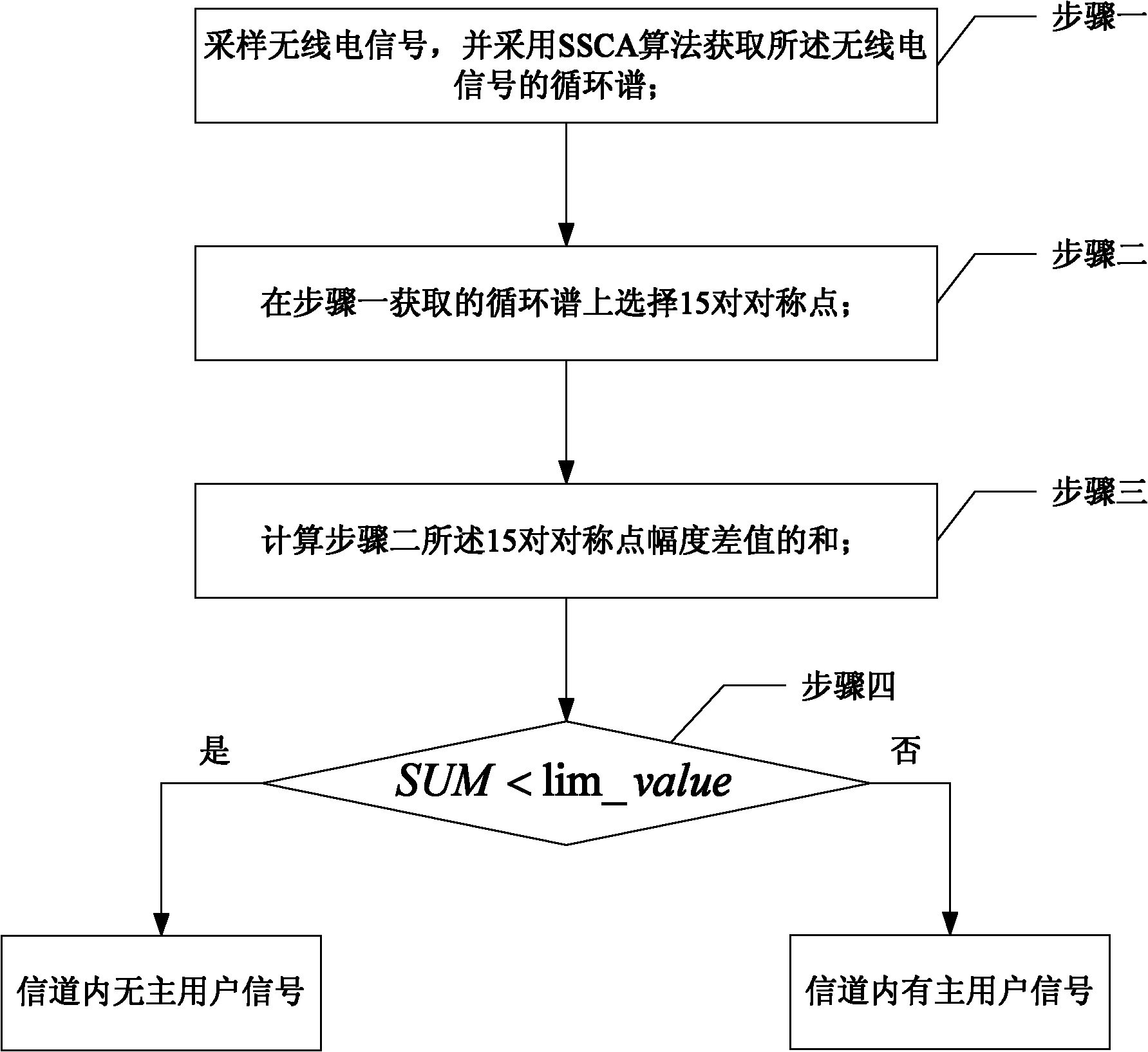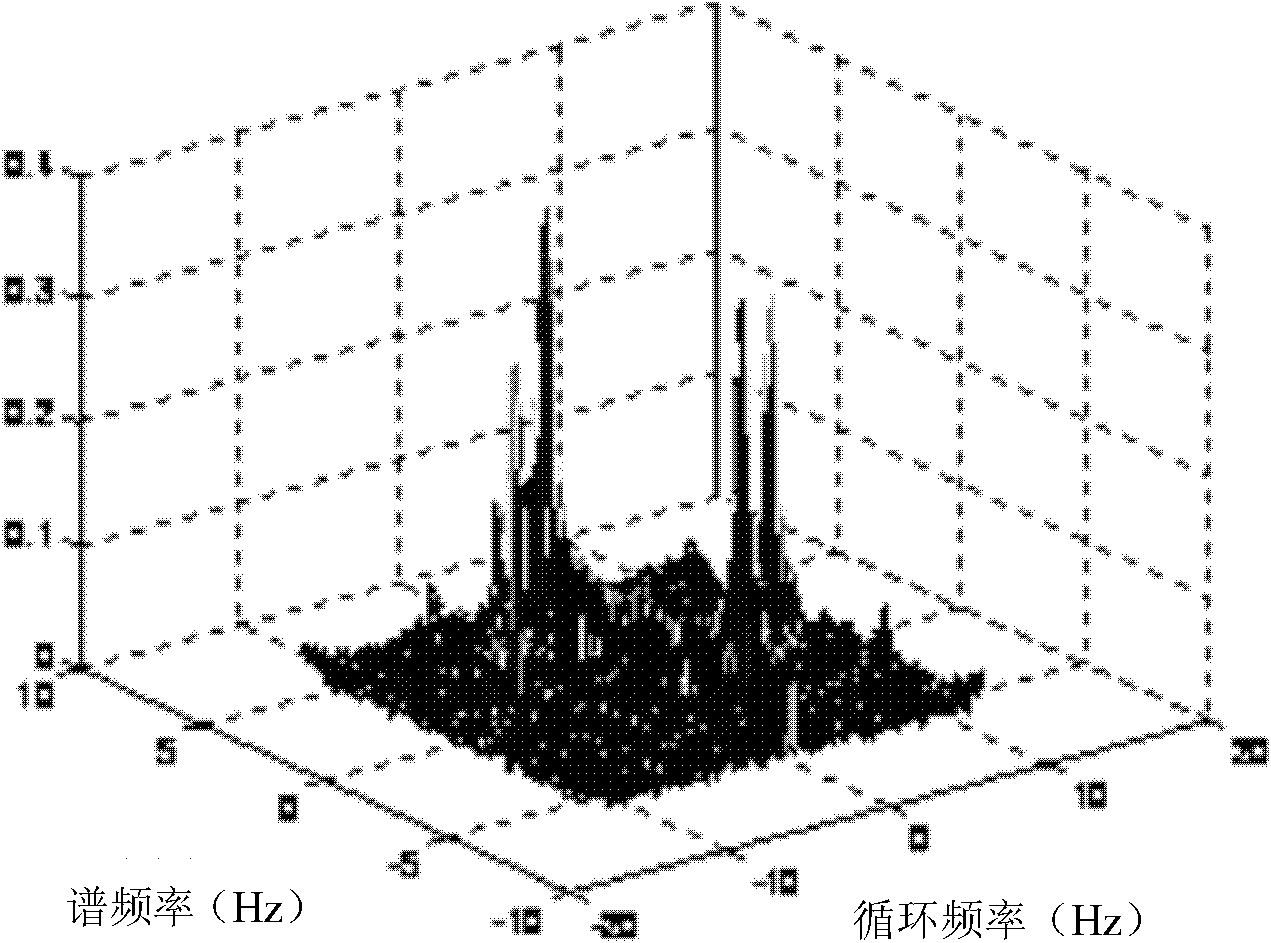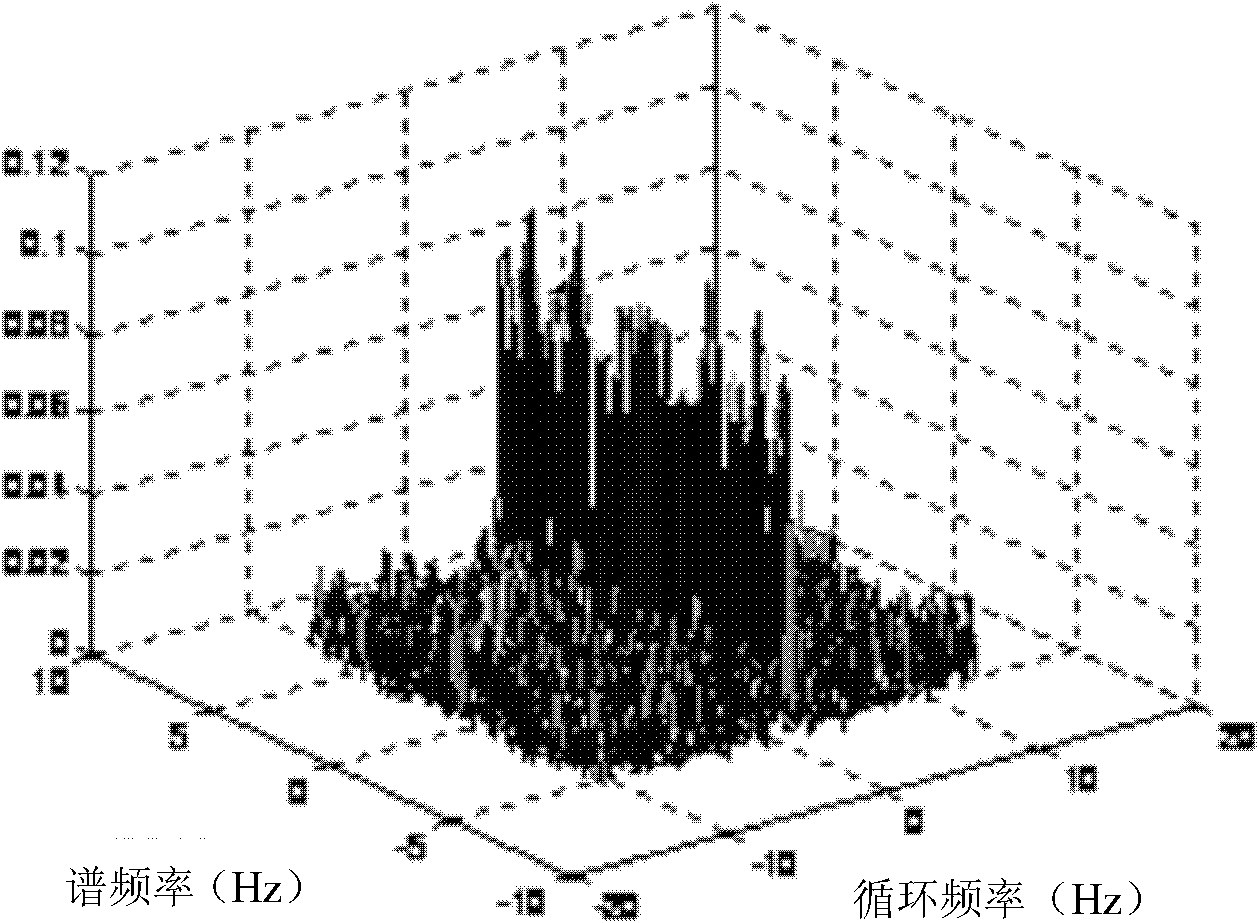Cognitive radio frequency spectrum sensing method based on circulation symmetry
A cognitive radio and spectrum sensing technology, applied in electrical components, transmission monitoring, transmission systems, etc., can solve the problems of large amount of calculation, low accuracy of spectrum sensing, and complicated calculation, and achieve the effect of improving accuracy.
- Summary
- Abstract
- Description
- Claims
- Application Information
AI Technical Summary
Problems solved by technology
Method used
Image
Examples
specific Embodiment approach 1
[0054] Specific implementation mode one: the following combination figure 1 , Figure 4 and Figure 5 This embodiment is described. A cyclic symmetry-based cognitive radio spectrum sensing method described in this embodiment is characterized in that the method includes the following steps:
[0055] Step 1, sampling the radio signal, and using the SSCA algorithm to obtain the cyclic spectrum of the radio signal;
[0056] Step 2. Select 15 pairs of symmetrical points on the cyclic spectrum obtained in Step 1;
[0057] Step 3, calculating the sum of the 15 pairs of symmetrical point amplitude differences described in step 2;
[0058] Step 4, judging whether the sum of the 15 pairs of symmetry point amplitude differences obtained in step 3 is less than the symmetry judgment threshold,
[0059] If the judgment result is yes, it is determined that there is a primary user signal in the channel; if the judgment result is no, it is determined that there is no primary user signal i...
specific Embodiment approach 2
[0063] Specific implementation mode two: this implementation mode further explains implementation mode one, the radio signal is sampled in step one, and the process of using the SSCA algorithm to obtain the cyclic spectrum of the radio signal is:
[0064] Step 11, receiving radio signals;
[0065] Step 12, perform down-conversion processing, and process the received radio signal into an intermediate frequency signal, and the frequency of the intermediate frequency signal is 700MHz~6GHz;
[0066] Step 13, sampling the intermediate frequency signal in step 12, the sampling frequency is 2.5 to 4 times the frequency of the intermediate frequency signal;
[0067] Step 14: Obtain the cyclic spectrum of the radio signal by using the SSCA algorithm on the sampled signal acquired in step 13.
specific Embodiment approach 3
[0068] Specific implementation mode three: this implementation mode further explains implementation mode one, and the process of selecting 15 pairs of symmetrical points on the cyclic spectrum in step two is:
[0069] The cyclic spectrum is a two-dimensional frequency plane, the abscissa is the cyclic frequency α, and the ordinate is the spectral frequency f,
[0070] The point selected for spectral frequency f is f s / 4, 0, -f s / 4,
[0071] where f s is the sampling frequency,
[0072] The point selected for cycle frequency α is -f s (1 / 2+4 / N′), -f s / 2, -f s (1 / 2-4 / N'), -f s (8 / N'), -f s (4 / N'), f s (4 / N'), f s (8 / N'), f s (1 / 2-4 / N′), f s / 2, f s (1 / 2+4 / N′),
[0073] Among them, N' is the number of FFT points of SSCA algorithm in complex demodulation,
[0074] The symmetry points of the cycle frequency α corresponding to each spectral frequency f are: -f s (1 / 2+4 / N') and f s (1 / 2+4 / N'); -f s / 2 and f s / 2; -f s (1 / 2-4 / N') and f s (1 / 2-4 / N'); -f s (8 / N'...
PUM
 Login to View More
Login to View More Abstract
Description
Claims
Application Information
 Login to View More
Login to View More - R&D
- Intellectual Property
- Life Sciences
- Materials
- Tech Scout
- Unparalleled Data Quality
- Higher Quality Content
- 60% Fewer Hallucinations
Browse by: Latest US Patents, China's latest patents, Technical Efficacy Thesaurus, Application Domain, Technology Topic, Popular Technical Reports.
© 2025 PatSnap. All rights reserved.Legal|Privacy policy|Modern Slavery Act Transparency Statement|Sitemap|About US| Contact US: help@patsnap.com



